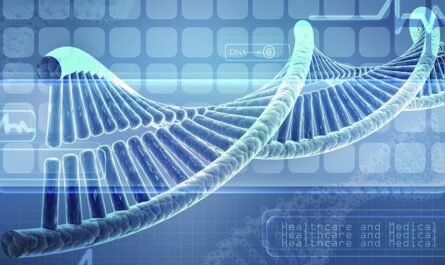Scientists from Fudan University and the Chinese Academy of Sciences in Shanghai have achieved a groundbreaking advancement in the field of in vivo gene editing. In a recent study published in Nature Neuroscience, the research team used whole-brain genome editing to correct a single-base mutation associated with autism spectrum disorder (ASD) in mice. The results of this study have significant implications for clinical neuroscience and provide hope for potential therapeutic approaches in treating genetic brain disorders.
The focus of the study was a single-base mutation within the MEF2C gene, which is known to be associated with ASD in humans. The MEF2C gene plays a crucial role in neural development and synaptic plasticity and is highly expressed in specific brain regions such as the cortex, hippocampus, and amygdala. Mutations in this gene lead to instability of the MEF2C protein, causing accelerated protein degradation. This, in turn, results in abnormal neuronal morphologies and developmental deficits associated with ASD, such as intellectual disability, speech impairment, and repetitive behaviors.
To address this mutation, the research team developed a base editing system called the AeCBE system (Apolipoprotein B mRNA-Editing Enzyme, Catalytic Polypeptide-embedded Cytosine Base Editor) that could convert C·G to T·A base pairs without causing double-stranded DNA breaks. By avoiding double-stranded breaks, the method minimized the risk of unintended additions or deletions.
The scientists conducted experiments on mice with the Mef2cL35P mutation, which exhibited behavioral abnormalities resembling ASD traits, including hyperactivity, repetitive behavior, and social abnormalities. They administered the AeCBE system via a blood-brain barrier-crossing adeno-associated virus, effectively correcting the mutation in the mice’s brain. This led to the restoration of Mef2c protein levels in various brain regions and the reversal of the behavioral abnormalities.
The successful outcomes of this study offer hope for the development of potential therapeutic approaches for genetic brain disorders caused by single-gene mutations. The ability to use gene editing techniques in living mice demonstrates the clinical relevance of this research in addressing genetic neurodevelopmental disorders in humans.
This breakthrough in in vivo gene editing has the potential to revolutionize the field of clinical neuroscience. By targeting specific gene mutations associated with neurodevelopmental disorders, researchers may be able to correct the underlying genetic abnormalities and alleviate the associated behavioral symptoms. However, it is important to note that further studies and clinical trials are required to determine the safety and efficacy of this gene editing technique in humans.
In conclusion, the research conducted by the scientists at Fudan University and the Chinese Academy of Sciences provides promising evidence that whole-brain genome editing can successfully reverse behavioral changes in mice with ASD. This advancement in gene editing technology brings us one step closer to developing effective treatments for genetic brain disorders, offering hope for individuals and families affected by these conditions.
*Note:
- Source: Coherent Market Insights, Public sources, Desk research
- We have leveraged AI tools to mine information and compile it




